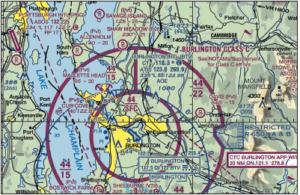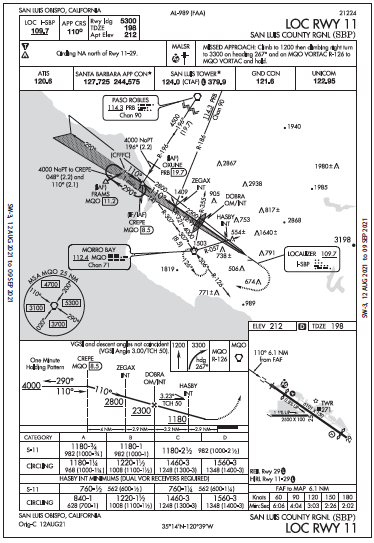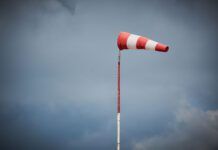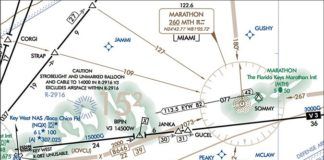Proceed on Course
Can you address the topic of “Proceed On Course” vs. “Proceed Direct xxx”? Specifically, if after being vectored during a departure and ATC says “Proceed on Course” does that mean fly direct to the next fix or fly back towards my original GPS course line and follow that to the next fix?
Ed Kach
Bethel Park, Pennsylvania
We covered this exact situation in the July 2020 article, “Cutting You Loose.” You can download that article from the web site; it’s a good read.
Bottom line is that “proceed/cleared on course” is common—but improper—ATC phraseology. Furthermore, it’s ambiguous as you’ve noted. Thus, per §91.123, you’re supposed to ask for clarification.
In thinking on this for a moment, we’d be tempted to express that ambiguity in our readback:
ATC: Proceed on course.
Pilot: Uh, I’m not sure what that means. Should I proceed direct to NXTFX, or just intercept the original course.
ATC: Just turn to intercept.
Pilot: Okay, do you want a 30, 45, or even a 90-degree intercept.
Yeah, that’s being a little “in your face” with the controller, but the result is a clear instruction and possibly getting the controller to rethink using that improper language.
Which Airport?
Regarding the January 2022 quiz, “Not What You Planned”:
Per your scenario, I plotted a direct-line GPS course from Boston to Montreal. So I’m on top of bad weather, east of Burlington (so maybe 14 miles due east, just east of R-6501), losing oil pressure at 9000 MSL. I would have called ATC and declared an emergency myself. When they suggested ALOKY IAF for Burlington (KBTV) RNAV Z 33, I would have responded “Unable; give me radar vectors close in to KBTV.” If they would not, I would then respond, “Going direct CAPNU IAF for the RNAV 35 to Plattsburgh (KPBG).” I would have already investigated KPBG and loaded it into the GPS as an en-route alternate (along with KBTV).
 KPBG RNAV 35 has 1) No terrain, versus an approach flying over a 4088-foot peak with only 800 feet of clearance in IFR, 2) 11,000-foot runway instead of 8000 feet, 3) 40-degree crosswind instead of 60-degree, 4) I’m already heading in that general direction, 5) from my present position, the KPBG RNAV 35 approach is about the same distance (35 miles) as the distance flying back to ALOKY, and 6) if my engine quits entirely and worse comes to worst, I may be able to ditch in shallow water on the shore of Lake Champlain.
KPBG RNAV 35 has 1) No terrain, versus an approach flying over a 4088-foot peak with only 800 feet of clearance in IFR, 2) 11,000-foot runway instead of 8000 feet, 3) 40-degree crosswind instead of 60-degree, 4) I’m already heading in that general direction, 5) from my present position, the KPBG RNAV 35 approach is about the same distance (35 miles) as the distance flying back to ALOKY, and 6) if my engine quits entirely and worse comes to worst, I may be able to ditch in shallow water on the shore of Lake Champlain.
For that matter, even if KPBG were 0/0, my chances of surviving an LPV approach and blind landing might still be better. Surviving a total engine failure and glide into the mountains southeast of KBTV is far less likely. Besides, I’m not going to fly away from airports and trade “flat land” altitude and glide for mountainous terrain.
Yes, I know the quizzes are just for fun and are great to get us thinking. I am concerned, however, that some of these scenarios also place subconscious “emergency response cards” in the minds of readers, to follow ATC directives without questioning or thinking for one’s self as PIC. Ask Scott Crossfield (the late X-15 test pilot) how that worked out for him.
Keith Jensen
Pocatello, Idaho
Good points, Keith.
The Killer Quizzes are surprisingly involved and challenging to create. We usually identify an approach and then begin to construct some scenario around it. Sometimes those scenarios end up a bit contrived so we can make a point, and perhaps aren’t the best real-world situation, as you identified for this Killer Quiz. In the future, we’ll try to take a better look at the big picture.
Sim Time Under the Influence?
I’m almost certainly facing some surgery in the next few months. I don’t yet know much about the recovery, but it could be a few months.
Of course, I wouldn’t fly while not feeling good enough and certainly not while on any prohibited drugs. But, could I legally log sim time? I’m thinking that everything might last a few months and keep me out of the cockpit long enough for proficiency and maybe even currency to suffer, so I’m considering ways to keep my skills up.
Sal Cruz
Watsonville, California
Mark Kolber, our regs guru, replies:
There’s nothing preventing you from logging the sim time. The rules against operating under the influence of alcohol or drugs only apply to aircraft (a ground training device is not an aircraft) including drones, and a few other things that involve danger to others, like rigging parachutes.
Theoretically, you can even do it in an airplane so long as you are not pilot in command or a required crewmember.
With a wink and a nod, I’ll even offer that those rules are about operating, not logging. There’s nothing preventing a pilot from logging a flight where he was stoned on drugs and alcohol, stole an airplane, switched off ADS-B, and busted Class B without talking to anyone—although it’s generally considered ill advised to record evidence of violations.
Which Radial?
Just catching up with the October edition. In the “Killer Quiz,” it reads, “Approach gives you a heading to intercept the PRB 196-degree radial. Heading south …”
Is this a typo? Nav2 is tuned to PRB and the course is set to 186 degrees. The answer to Question 1 discusses position with respect to R-186. Both the 186 and 196 radials are depicted on the chart. I’m confused.
Robert L. Harris
Hillsborough, New Jersey
First, both radials are depicted on the chart as one means of identifying fixes. And, given your location (nearly) on final and past CREPE, it makes sense to have R-186 selected (in nav 2) for situational awareness.
 Is this a typo? Uh, sure, okay. But, probably not.
Is this a typo? Uh, sure, okay. But, probably not.
Your point is valid, but we don’t see the relevance. That’s just an initial vector, followed by a vector to the southwest, so you’d never actually intercept whichever radial it is. If you’d like, it could be a typo, but it also works as written.
Assume for a moment that the initial instruction was to fly south to intercept R-186. Then what? Not much you can do from ZEGAX. Maybe you could ask to be cleared from there, but it’d be tight. But, if it was to intercept R-196, to CREPE, an IAF, you could easily begin the approach. Why did the controller then redirect you via FRAMS? We don’t know. Might’ve been traffic, locusts, weather … anything.
With that reasoning, we’re going to stick with the instruction as published and use the R-196.




